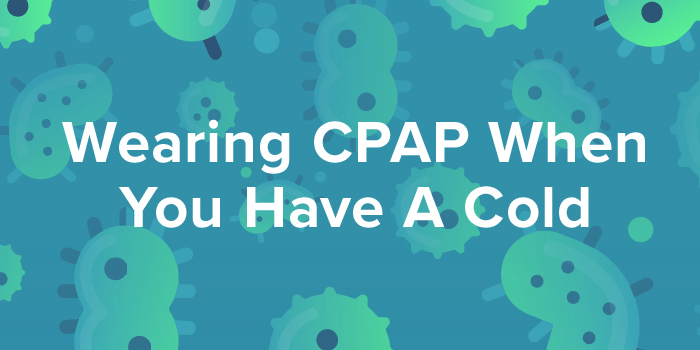Nov 26th 2021
Is Wearing CPAP When You Have a Cold Safe?

Tis is the season for cold and flu-like symptoms. As a CPAP user, this time of year can be incredibly challenging as you begin experiencing those unpleasant symptoms. It also brings up the commonly asked question, is wearing a CPAP when you have a cold safe? The simple answer is yes and no, depending on the type and severity of your symptoms.
If you have a respiratory illness that’s impacting your breathing, it’s best to avoid using your CPAP machine until you recover. This article will provide additional information on other symptoms, when you should discontinue CPAP use and tips for using your device when you are sick.
Cold and Flu Symptoms
Here are some common signs that you might be sick with the common cold or flu.
- Aches
- Chills
- Cough
- Discomfort in your chest
- Fatigue
- Fever
- Headache
- Nausea
- Sneezing
- Sore throat
- Stuffy or runny nose
When to Take a Break from Wearing CPAP When You Have a Cold
If you have any respiratory illness indicators - cough, stuffy or runny nose, sore throat - that are more than minor symptoms, it’s best to stop using your machine until you’re healed. If you’re worried about how it will impact your treatment, consult your doctor. Also, there are other signs you should be cautious of when using your CPAP.
- Ear pressure
- Ear pain
- Nosebleeds
- Shortness of breath
- Vomiting
If you’re experiencing any of the above symptoms, you should consult your doctor about discontinuing your treatment until you’re better.
5 Tips on Using CPAP When You Have a Cold
If you have minor respiratory symptoms, your CPAP machine can actually increase your recovery. The pressure from your therapy helps to clear the mucus in your body and open the nasal passages. If you decide to use your device, here are some helpful tips to make the process easier.
Tip #1 Use a Heated Humidifier
It’ll help restore the moisture to your mucus membranes and nasal passages to alleviate your symptoms and help you recover.
Tip #2 Use a Full Face Mask
Unlike a nasal mask, a full face mask allows you to breathe through your mouth instead of your nose. This is useful if you’re having difficulties breathing through your nose.
Tip #3 Elevate Your Head or Side Sleep at Night
If you usually sleep on your back, use pillows to elevate your head to allow the mucus to drain. If you’re able to sleep on your side, it will help to naturally open your airways, making it easier for the machine to do its job.
Tip #4 Try Over-the-Counter Medications or Nasal Sprays
These types of products can help to ease your symptoms at night, making your therapy more comfortable. A saline spray effectively adds moisture to the lining of your nose and opens up your airway. If you decide to try a nasal spray, make sure to check with your doctor if you’re on any type of medication to make sure it’s safe for you to use.
Tip #5 Adjust Your CPAP Pressure
Sometimes increased pressure may provide the needed relief and open your airways. Consult with your doctor before making any changes yourself to see if this is an ideal option for you.
Cleaning Your CPAP Machine When You're Sick
If you choose to continue using your CPAP device, make sure to keep the equipment clean to avoid bacteria or germs building up, which can prolong your sickness.
Be Prepared & Stock Up on Your Supplies
Illnesses are usually unexpected, so make sure you stock up on your CPAP replacement and cleaning supplies to maintain healthy treatment. As a trusted CPAP supplier, GoCPAP.com has everything you need to manage your CPAP therapy.











